Ikenobo and the Rokkakudo Temple – Birthplace of ikebana
The Rokkakudo (Chohoji) temple is said to have been founded by Shotoku Taishi (Prince Regent Shotoku). Successive generations of Ikenobo headmasters have served as head priests of this temple and the site is known as the “birthplace of ikebana.”
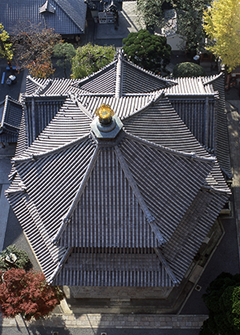 Rokkakudo Temple
Rokkakudo Temple
Founding of the Temple by Shotoku Taishi
(Prince Regent Shotoku)
The Rokkakudo Temple, birthplace of ikebana, is formally known as Shiunzan Chohoji Temple. Shotoku Taishi (Prince Regent Shotoku) first visited the site of the present temple, then an uninhabited area, searching for timber for construction of Shitennoji Temple in Osaka. It is said that Buddha spoke to the Prince in a dream; the Prince then built a six-sided temple (“rokkaku” means hexagonal in Japanese), enshrining the amulet of “Nyoirin Kannon (the goddess of mercy)” he was carrying.
Origin of the name Ikenobo
It is said Shotoku Taishi had bathed in a pond on the north side of the Rokkakudo Temple. The Buddhist priests who made floral offerings morning and evening at the Buddhist alter of the temple lived near this pond (the Japanese word for pond is “ike”), in a small hut (called “bo”). For this reason people began to call the priests by the name “Ikenobo.” Ono-no-Imoko, who served Shotoku Taishi, is said to have become a Buddhist priest and lived here.
The head priest of the temple is the Ikenobo Headmaster
In the Muromachi period (15th-16th centuries) Ikenobo managed the temple, and Senkei Ikenobo and Senno Ikenobo played active roles in the development of ikebana, establishing the position of the Headmaster of “kado” or ikebana. Successive generations of Ikenobo headmasters have served as head priests of this temple.
-
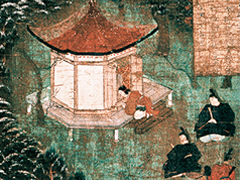 Shotoku Taishi Eden
Shotoku Taishi Eden
- Muromachi period
Illustrated biography of Shotoku Taishi. The founding of the Rokkakudo Temple is depicted in the second of six scrolls. -
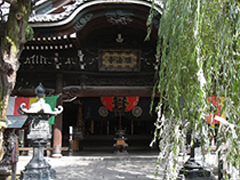 The Rokkakudo Temple is a 3 minute-walk from exit #5 of Karasuma Oike station on the Kyoto City Subway. The temple attracts many tourists and visitors.
The Rokkakudo Temple is a 3 minute-walk from exit #5 of Karasuma Oike station on the Kyoto City Subway. The temple attracts many tourists and visitors. -
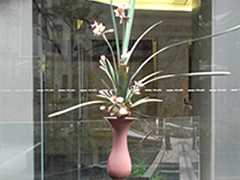 In the temple grounds there are several monuments to the birthplace of ikebana.
In the temple grounds there are several monuments to the birthplace of ikebana. -
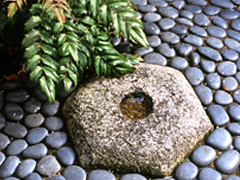 A six-sided stone, located south of the main temple, is said to be the center of Kyoto City and is known as the “navel stone.”
A six-sided stone, located south of the main temple, is said to be the center of Kyoto City and is known as the “navel stone.” -
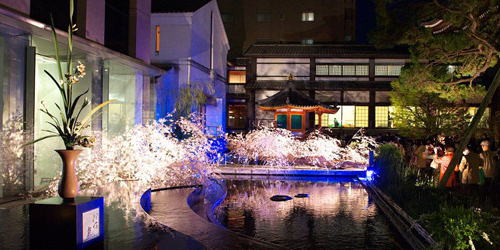 The Ikenobo Ikebana Spring Exhibition is held annually in April at the Ikenobo Headquarters next to the Rokkakudo Temple. In 2013 large ikebana arrangements were beautifully illuminated outdoors in the temple grounds during the evenings of the exhibition period. Rokkakudo temple website(Japanese texts only)
The Ikenobo Ikebana Spring Exhibition is held annually in April at the Ikenobo Headquarters next to the Rokkakudo Temple. In 2013 large ikebana arrangements were beautifully illuminated outdoors in the temple grounds during the evenings of the exhibition period. Rokkakudo temple website(Japanese texts only)
